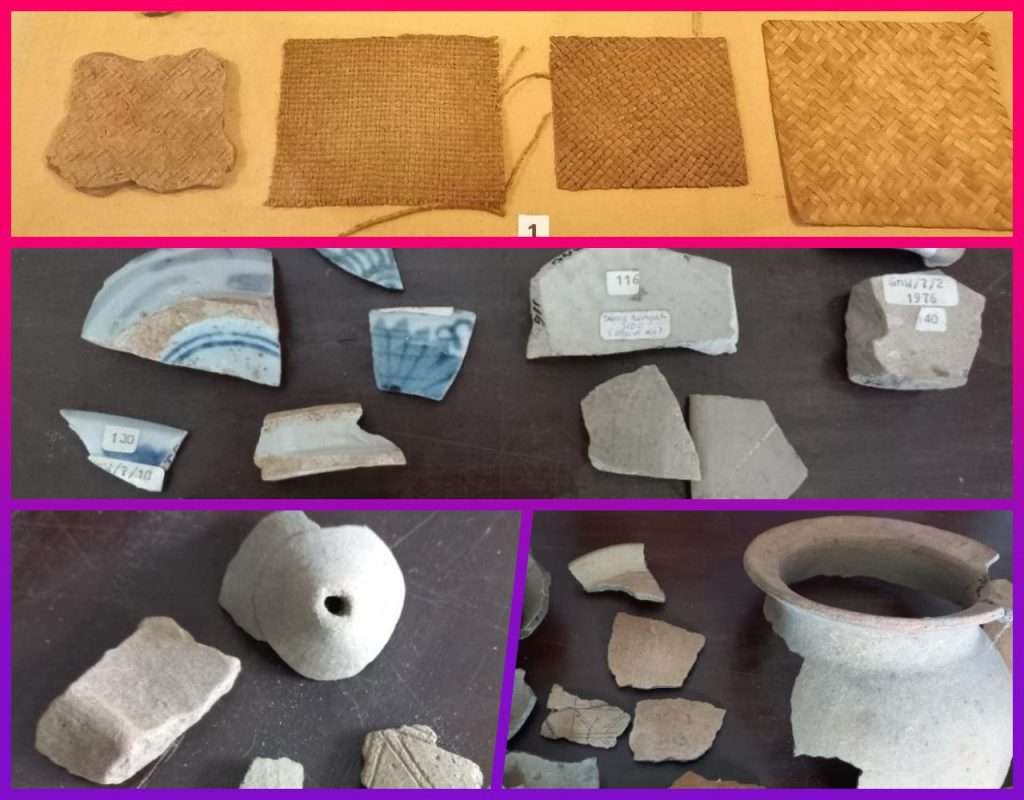For hundreds of years, the Bantul creative sector has been evolving. Several sites and artifacts provide significant evidence that the people of Bantul were involved in the creative craft world.
According to the Creative City Bantul profile book, the history of the creative industry in Bantul is divided into 4 periods:
1. Historical Proto Period
The primordial legacy of craft art is the notion of a harmony triangle, which underpins all craft art creations. This triangle represents a harmonious equilibrium between mankind, the cosmos, and the creator God. The harmony triangle is an emblem of Javanese living principles, values, social ethics, customs, conduct, and life perspectives.
Creative craft works had a very close association with beliefs in the Ancient Mataram era throughout the historical proto period.
The shape of Meru, or mountain, has a significant impact on the artisan goods. The people thought that the mountain housed their ancestors and gods.

The development of the creative industry in Bantul at that time was marked by the discovery of relics of artifacts such as human and animal bone fragments, pottery and bronze fragments, and foreign ceramic fragments.
Yogyakarta Archaeological Agency found the artifact on Mount Wingko, Sanden District. The craft product is thought to be used as a means of grave-back religious rituals.
Community beliefs give grave to people who died indicate differences in social strata of society. Metal products findings show interactions between communities and outside communities through trade.
2. Historical Period
The historical period begins with the historical voyage of Ancient Mataram (about the 8th century) to Mataram Islam. Mataram is the name of one of Indonesia’s most prominent kingdoms throughout its history.
The temples that formed Java’s cultural origins are a notable artifact from the Ancient Mataram era. The many reliefs etched into the temple’s walls depict everyday life in that era.
The production of handmade objects to suit everyday requirements, both for rituals and families, is a popular hobby.
Keraton first produced unique workmanship on the king’s commands in order to assist people’s lives satisfy their necessities. The activity gradually evolved, and it was carried out not just by keraton but also by regular people.
This resulted in variations in the outcomes of keraton producing crafts and ordinary people. The terms alusan product (excellent grade) and rough items emerge (low quality). Keraton environmental items are believed to be high-quality crafts because they respect the qualities linked with magical ceremonies. Every product made has an implied significance.
Low art craft objects produced by society, on the other hand, lack a philosophical component and are simply intended for practical usage based on their functions.
3. The Period of Tradition of Modern Expressions
This period began in the 18th and 19th centuries, with the influence of European colonial style. In Europe, the emergence of the industrial revolution was defined by industrialization, which made labour more efficient. Products may now be manufactured in one day, as opposed to 10 days previously.
This advancement and simplicity causes consumption habits to go upward. Indirectly require craftsmanship to generate things that are all-around, exact, mass-produced, and completed within a specific deadline.
At the time, the amount of intricacy, smoothness, and high pricing were used to evaluate artwork objects. The exchange of creative commodities from various cultures leads in a one-of-a-kind combination of artisan works. Silk batik textiles, silver and gold jewelry, and household furniture with elaborate and gorgeous carvings are some examples.
If high art items could only be developed by royal ancestors in the past, art crafts might now be created by studying science.
Craft art research began to be produced at this time, rather from simply following what currently existing. Because the artisans have analytical and creative critical attitudes, the creation activities they do exhibit a high level of commitment and professionalism.
4. Global Period – Digital
The era of information openness and free commerce ushered in a new era of artisan art.
The creative industry’s potential in the Bantul Regency is critical for adapting to the requirements of craft items on the international market.
This shifting position is a product that is empowered for the environment in the twenty-first century. People are more likely to prefer things made from pre-existing materials when they are aware of severe environmental abuse.
Recycle and upcycle is a product derived from waste that is converted into useful products with high economic value.

